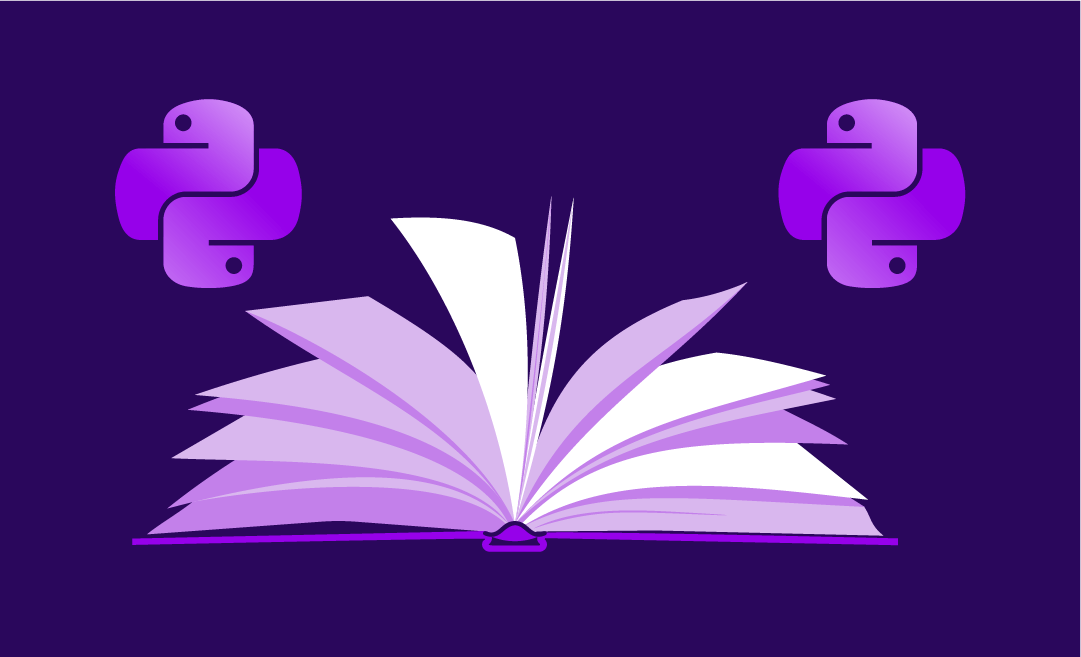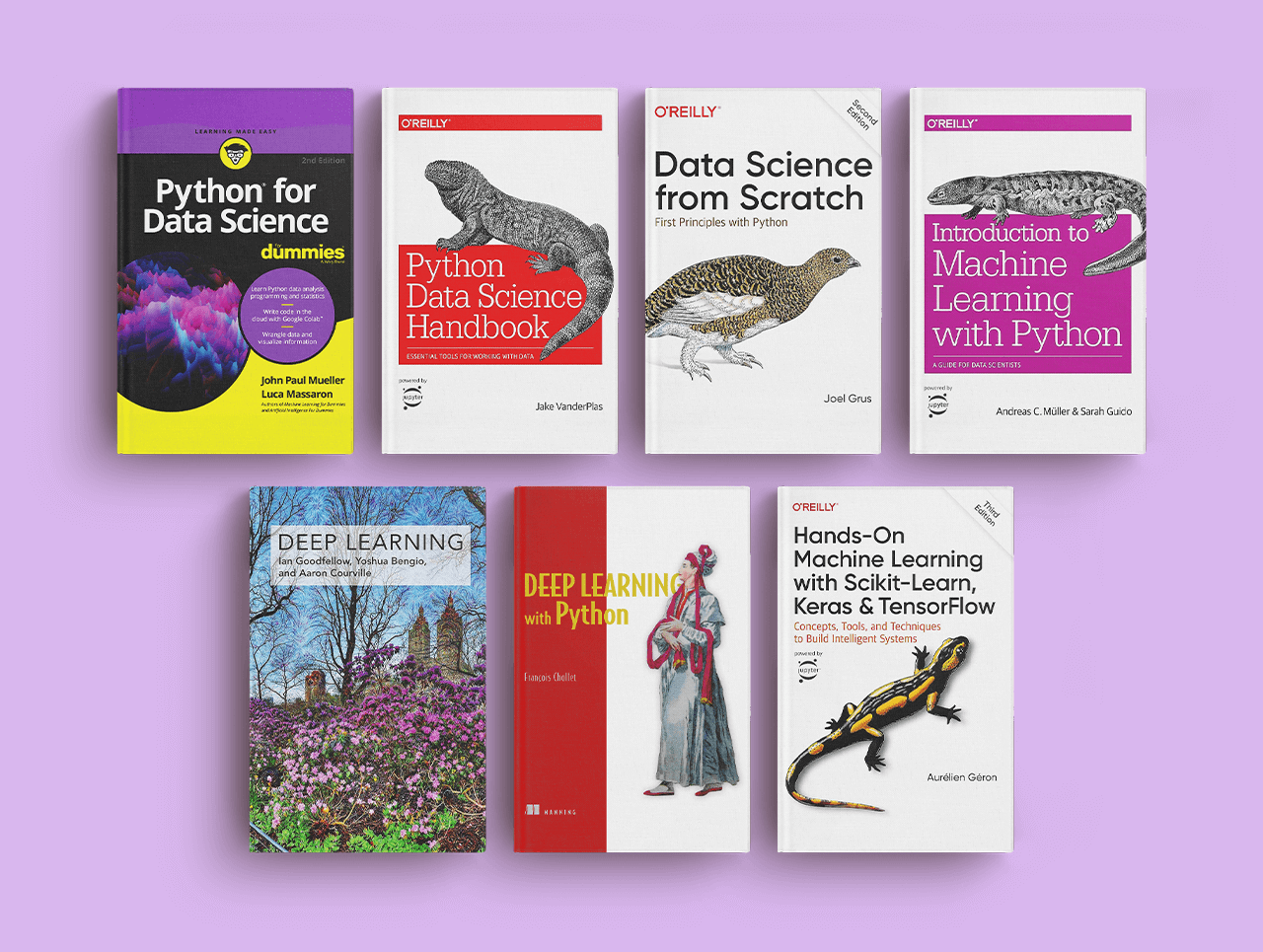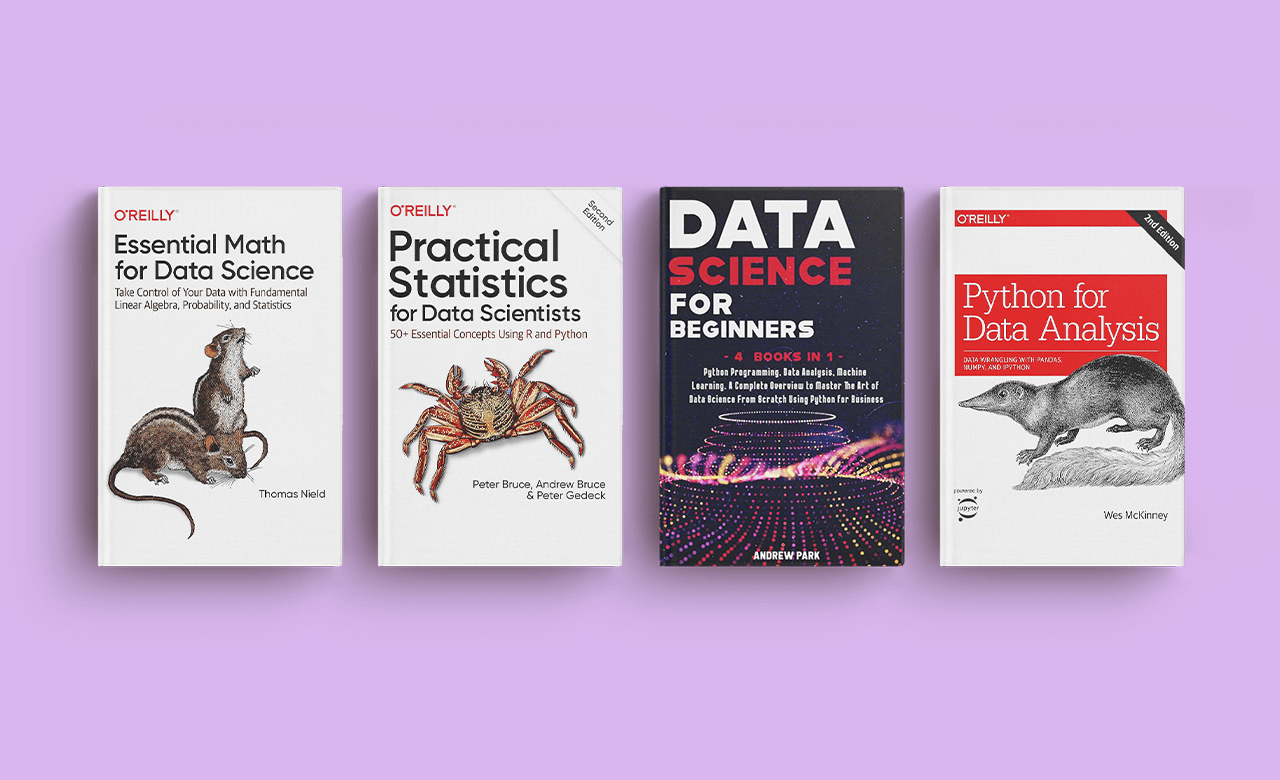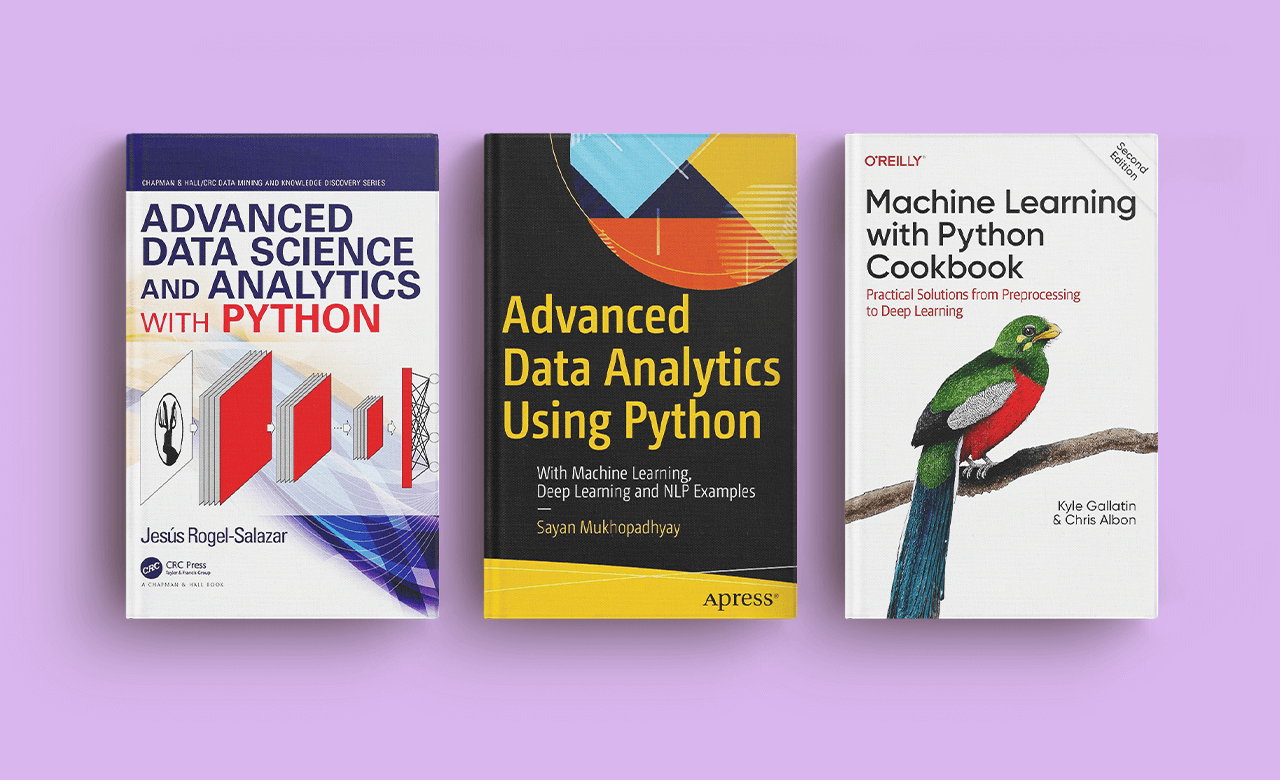Python for Data Science: The Best Books
The author of this article is tech expert Pieter Murphy.

Python has been around since its release in 1991. It has recently gained popularity and has grown significantly over the last 5 years to become the most popular language according to the Popularity of Programming Language Index (PYPL INDEX).
The index is determined by analyzing how frequently people search for tutorials for a particular language on Google. Over time, many books have been written about the language, and in this article, we look at the best books on Python for data science.
But first, how has Python captured the hearts and minds of data scientists and data analytics professionals? Two reasons:
Python is simple and easy to learn. It uses highly readable, intuitive, and straightforward syntax. This is especially useful because the data and analytics science ecosystem is also composed of individuals from both technical and non-technical backgrounds, and thus, Python, an easy-to-learn language, is often their first option.
Python has numerous beneficial libraries. The libraries expedite and simplify a good fraction of the tasks in information science, from cleaning data to designing and building machine learning models.
In this article, we compile a list to help you collate data science materials for self-study. They should help you answer the question, ‘What is data science?’ in a deeper, more comprehensive, and advantageous way.
Python for Data Science Books
One effective way of learning any software tool, programming language, or Python in particular, is by an interactive online course that lets you practice while going through the various concepts and topics.
This combination is fundamental to gaining proficiency when learning how to become a data scientist.
However, you can also use books to learn Python for data science as supplementary materials to your online courses. In this article, we’ll review some of the best books on Python for data science.
Do you want to improve your Python skills for data and analytics science? Then you’re at the right place! Take advantage of this opportunity to take part in our Career Bootcamp from Anywhere Club, where you’ll sharpen your skills when it comes to Python as a data scientist.
The Anywhere Club Career Bootcamp is an educational online program. Participating will give you a competitive advantage in the job market as it will:
Help you compose a compelling resume;
Qualify you for a junior role in the shortest time possible,
Afford you the rare opportunity to go through training stages with a real recruiter and
Teach you life hacks you can apply when job searching that will increase your chances of getting hired.
Two available training plans are free and a paid one at $45, depending on the program. The language of instruction is English, and the program lasts more than 15 hours. See you there!
7 Python Best Books for Data Science
The following Python books for data science are highly recommended by data scientists active in the data analytics community. They should significantly help you when starting your coding with Python.

1. “Python for Data Science For Dummies” by John Paul Mueller and Luca Massaron
Mueller and Massaron’s book introduces you to data-driven science in Python. It begins by explaining how it closely relates to Python. It also outlines the numerous advantages of learning information science using Python.
The Python for Data Science book has a chapter that covers the basics, which you will find very useful, especially if you’re new to Python or programming. It should be a preparatory read, even if you’ve never interacted with Python.
The remaining chapters will take you through cleaning, manipulating, and cleaning data. It will also allow you to learn how to visualize data with Matplotlib. There are also chapters about machine learning and data analysis in the book.
2. “Python Data Science Handbook: Essential Tools for Working with Data” by Jake VanderPlas
Jake VanderPlas is the Director of Open Software at the University of Washington’s eScience Institute, who uses worked-through examples to explain concepts and topics clearly. His book covers some of the most common data concepts like machine learning, data visualization, and data manipulation.
The book allows you to study Python essential training like libraries (Scikit-Learn, Matplotlib, Pandas, and NumPy,) which are the most widely used in the field of information science.
If you’re a complete beginner in the field of data, you should start with other more beginner-friendly Python for data science books that we’ll discuss shortly and make this one your second or third book.
This is because the Python Data Science Handbook moves quickly to more complex tasks like customizing plots, vectorized operations, array broadcasting, etc.
However, if you’re already comfortable with or after you understand the basics of data analytics, feel free to dive into this Python data science book, as it is a great resource for knowing more about the advanced functions of the different Python data-driven science libraries.
3. “Data Science from Scratch: First Principles with Python” by Joel Grus
Joel Grus is a data scientist and software engineer. This book is excellent for learning the fundamental algorithms employed in data science.
Most people often use algorithms without fully knowing how they work. Python libraries let you use common algorithms with just a few lines of code, which is advantageous because it’ll save you a lot of time you’d have spent writing many lines of code. This is a neat trick, but you’ll still need to understand its inner workings.
This book will show you ways of implementing such algorithms from scratch and, in doing so, help you to understand them comprehensively. From the book, you’ll also know the pros and cons of the algorithms.
The process of model creation is iterative, and it will require you to adjust, tune, and evaluate your model more than a few times. It is, therefore, crucial to have a solid understanding of algorithms to perform accurate and robust evaluations.
This book has algorithms that data scientists use to develop machine learning models, such as decision trees, linear regression, and gradient descent, among others. It also contains sections that cover probability, statistics, and algebra, all of which are important in information science.
4. “Introduction to Machine Learning with Python: A Guide for Data Scientists” by Andreas C. Müller and Sarah Guido
Machine learning is an essential subset of data science. Its wide range of applications includes image classification, targeted marketing by customer segmentation, customer churn prediction, inventory optimization in retail, predictive maintenance, and demand forecasting.
The authors of this book lay out the applications and fundamental concepts of machine learning. The book also evaluates machine learning algorithms commonly used in terms of their shortcomings and advantages.
Introduction to Machine Learning with Python: A Guide for Data Scientists focuses on the practical side of concepts instead of giving out only in-depth theoretical knowledge. Use this book to learn how to use Python libraries to make machine-learning applications.
In it, you’ll also discover applicable parameter tuning and evaluation information. The activities needed to create a machine learning model require a significant amount of effort, and you may need to do a number of trials and reruns before the model can be deployed in production.
5. “Deep Learning Book (Adaptive Computation and Machine Learning Series)” by Ian Goodfellow, Yoshua Bengio, Aaron Courville
Elon Musk states that this is the only book that effectively covers the subject and he seems to know what he is talking about sometimes. A billionaire’s endorsement notwithstanding, this book is the ideal resource for you if you plan to comprehend and perform deep learning or machine learning, one of the important skills for data scientists growing their careers.
The book’s authors are some pioneers in data science as a field. Ian Goodfellow is the creator of the generative adversarial network (GAN), a type of neural network primarily used for generative modeling.
To get the most out of this book, you would need a technical background, and thus, we can safely say that this book isn’t beginner-friendly. The concepts in this book require a substantial amount of time to understand and absorb. The concepts include natural language processing, conventional networks, optimization algorithms, and information and probability theory.
If you plan to work with deep learning and machine learning, fully comprehending the concepts presented in this book will get you there.
6. “Deep Learning with Python” by François Chollet
François Chollet is currently a researcher at Google. He created a deep learning framework built upon TensorFlow called Keras. Practitioners in machine learning and deep learning widely use Keras.
When trying to answer the question ‘What does a career in data science entail?’ theoretical and conceptual information with lots of examples will prove helpful during your learning process. Deep Learning with Python is designed for people with or without experience as machine learning professionals.
After introducing you to machine learning, the book covers common applications of deep learning, such as text generation and classification, time series forecasting, and image generation and classification.
When you compare this book to the Deep Learning Book (Adaptive Computation and Machine Learning Series), you’ll find that this book is more practical. We recommend reading both because theoretical knowledge is as important as experience.
7. “Hands-On Machine Learning with Scikit-Learn and TensorFlow: Concepts, Tools, and Techniques to Build Intelligent Systems”, by Geron Aurelien
This book will help you to learn in a hands-on manner, which is especially crucial when learning how to become a data scientist without a degree. The Scikit-learn section uses classic machine learning approaches that provide you with an enormous context and practical tools that you can employ to solve a wide range of issues.
The book manages to strike an outstanding balance between background/theory and application. It shows how, even with little or no experience, you can teach yourself how to use simple tools to develop data-driven programs.
Geron Aurelien uses a combination of two production-ready Python frameworks—Scikit-Learn and TensorFlow, a little theory and concrete examples throughout the book.
The book's first part goes over the basics of machine learning algorithms. Random Forests, Decision Trees, Support Vector Machines, and many other algorithms are included. The book provides each algorithm with Scikit-learn examples. The second part uses the TensorFlow library to explain deep learning data science project ideas.
Data Analysis with Python Book for Beginners
It is a fact that machine learning is currently booming. However, other aspects of data science are still heavily used, among them data analytics. Here are some beginner-friendly Python for data analysis books that will act as essential sources to polish your expertise in Python.

1. “Essential Math for Data Science: Calculus, Statistics, Probability Theory, and Linear Algebra,” by Hadrien Jean
While it’s true that you don’t need a full understanding of mathematics to join the field of information science, one of the essential steps to get into a data science career is to possess a solid foundation in mathematics.
This book strives to cover and explain the math at the core of deep learning, machine learning, and data-driven science. The book will help you acquire mathematical fluency that will widen your data analytics abilities, whether you want to add data analysis to your arsenal of tools or you’re just a data scientist who lacks a mathematical background.
Hadrien Jean demonstrates in the book how you can leverage Python to visualize space transformations and plot data. Additionally, the book covers machine learning libraries like Keras and TensorFlow.
2. “Practical Statistics for Data Scientists: 50+ Essential Concepts Using R and Python (2nd Edition),” by Peter Bruce, Andrew Bruce, and Peter Gedeck
This book is useful for both aspiring and current data scientists who do not have any formal training in statistics. When you finish the book, you will master the fundamentals of statistics for analytics science.
As much as the book goes back to the basics, it still takes the perspective of data-driven science, ensuring that you’ll learn ways of applying statistical knowledge and methods in your daily tasks.
The much more recent second edition publication highlights the concepts that are and aren’t necessary for data scientists and examples of statistical applications in Python.
3. “Data Science for Beginners,” by Andrew Park
Data Science for Beginners by Andrew Park consists of the following four books on data science using Python:
Python Data Science
Python Machine Learning
Python for Data Analysis
Python for Beginners
This four-book set is designed for beginners. Therefore, if you’re completely new to data and analytics science, it’s for you. The four data science Python books will give you a working understanding of machine learning, data analysis, and Python.
Each book contains tutorials and step-by-step instructions on using the popular programming language Python to manipulate data, create neural networks, and fully master the basics. For individuals looking to make a career switch to data science, this series is invaluable.
4. “Python for Data Analysis: Data Wrangling with Pandas, NumPy, and IPython, 2nd Edition,” by Wes McKinney
This data analysis Python book is ideal for both data analysts who are new to Python and Python programmers who are unfamiliar with scientific computing and data-driven science.
Its first part teaches the fundamentals of programming with Python, followed by the role that Python plays in data analysis and statistics. This book on python for data science will give you a glimpse into what you’ll be doing once you begin your career as a data scientist or data analyst.
It is a complete guide for crunching, cleaning, processing, and manipulating datasets in Python. The book will teach you the latest versions of IPython, NumPy, pandas, etc, and it will also enable you to work with real case studies.
It is highly recommended that you acquire the skill of solving real-world data analysis problems. As a data scientist, you’ll spend most of your time data wrangling. Nonetheless, it’s possible to reduce your time by knowing how to leverage tools and libraries well.
One effective way of doing so is enrolling in courses from Anywhere Club, where you’ll find the best materials about Python for data science.
Best Advanced Python Books for Data Science
Here are three of the top advanced books on Python data science:

1. “Machine Learning with Python Cookbook: Practical Solutions from Preprocessing to Deep Learning,” by Chris Albon
This book is a valuable resource for data scientists who need a practical guide for solving real-world machine-learning problems. It is designed for professionals who are already comfortable with Python and its libraries, such as sci-kit and pandas.
It provides solutions to a wide range of problems, from data preprocessing and loading to dimensionality reduction and model selection. The text book uses an approach beyond just theories; it offers hands-on code examples that you can adapt to construct your application.
With its close to 200 self-contained recipes, the book effectively addresses diverse machine-learning tasks.
2. “Advanced Data Science and Analytics with Python,” by Jesus Rogel-Salazar
This book targets professionals with a programming background who want to learn more about the tools used in information science and statistics. It allows data scientists to build upon their data science and analytics course skills and apply them in both academic and business settings.
The subjects covered in the book complement and follow up on the topics in Data Science and Analytics with Python. The primary goal is to cover significant advanced data analysis sectors using tools from Python like NetworkX, Beautiful Soup, Numpy, Pandas, SciKit-learn, and others.
One unique thing about this book is that you can use it only when needed instead of sequentially reading it.
3. “Advanced Data Analytics Using Python: With Machine Learning, Deep Learning and NLP Examples,” by Sayan Mukhopadhyay
This data analysis with Python book will give you a broad foundation of advanced data analytics concepts. In it, you’ll discover the recent revolution in databases like MongoDB, Elasticsearch, and Neo4j.
Completing this book will give you an experience of every technical aspect of an industrial analytics project. Concepts that use Python are very thoroughly explained.
Conclusion
The carefully curated lists in this article empower you to select the most suitable book for learning Python for data science based on your current skill level and learning goals. When you’re considering your data scientist career outlook, remember that consistent practice and exploration are key to unlocking the full potential of data analysis with Python.
Best of luck!

.png)
